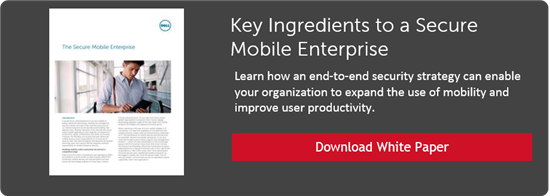There’s no question that mobility offers a wealth of benefits to organizations, from better productivity and collaboration to improved IT agility and competitive advantage. But as I explained in my previous blog, implementing a mobility program requires careful attention to security. There, I detailed why secure virtual workspaces are the best way to enable users to access corporate resources from their personally owned devices.
Now let’s look at another piece of the mobile security puzzle — preventing security breaches on corporate-owned devices. How can IT keep mobile devices up-to-date and secure, both when they’re in the hands of authorized users and in the event that the device is lost or stolen?
The answer is effective mobile device management (MDM).
A sound MDM strategy will include the following best practices for keeping data from being compromised:
- Remotely manage apps and content on mobile devices — Secure remote inventory, distribution and management of apps and content enables IT to keep corporate mobile devices provisioned with the apps that users need according to their job responsibilities; ensure that all applications are up to date with appropriate patches and security fixes; and quickly remove applications and content that are deemed to be a security risk.
- Know where each device is geographically — Keeping tabs on each device’s geo-location will help alert you to possible instances of loss or theft, so you can take appropriate action quickly to protect corporate data.
- Be able to remotely lock and wipe mobile devices — If you have reason to believe a device has been lost or stolen, you need to be able to remotely lock it and, if necessary, wipe all data from the device.
- Enable user self-service — A policy-driven, self-service portal enables users to perform tasks based on their individual roles or group memberships. For example, users should be able to view their current devices and register new devices; reset their own passwords; locate, lock and wipe their devices without waiting for help from IT; and view and request changes to their access permissions.
- Get real-time reports, alerts and analytics – Security clearly requires real-time, exception-based alerting on critical issues. In addition, organizations need reports and analytics that help them achieve and demonstrate compliance; maintain and review detailed audit trails of all user and admin functions; and understand trends and anticipate future requirements.
Learn more about building a secure mobile enterprise
Effective MDM complements the secure virtual workspace, helping organizations create, implement and grow their BYOD strategies. To learn more about achieving a secure mobile enterprise, read our whitepaper, “The Secure Mobile Enterprise.”





